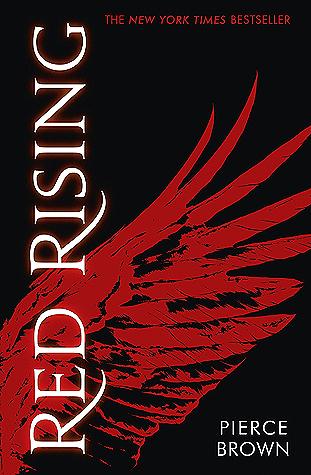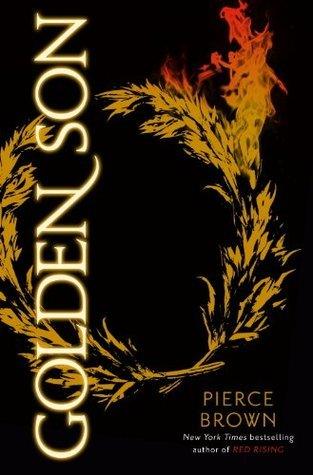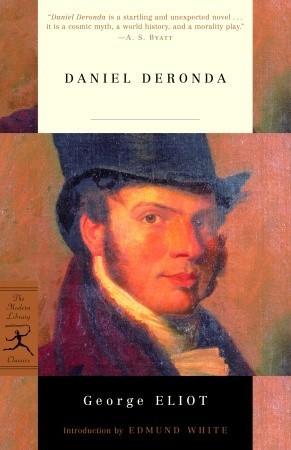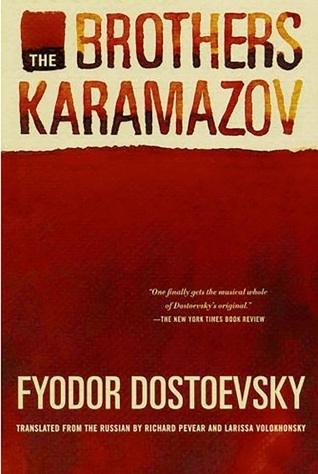The Crucible by Arthur Miller Book Summary
Discover a comprehensive summary of Arthur Miller's "The Crucible," along with key insights and a thoughtful review. Explore the themes, characters, and historical context that make this play a timeless classic. Perfect for students and literature enthusiasts alike!
The Crucible Book Summary
Arthur Miller's The Crucible stands as one of America's most powerful theatrical works, using the Salem witch trials as an allegory for McCarthyism and mass hysteria. This timeless drama explores themes of integrity, guilt, and the dangerous consequences of extremism through the tragic story of John Proctor and his community's descent into paranoia. Miller's masterpiece remains strikingly relevant today, offering profound insights into how fear can corrupt justice and destroy lives. The play's examination of moral courage versus social pressure continues to resonate with audiences, making it essential reading for understanding both historical persecution and contemporary political witch hunts.
Enhance your reading journey with our comprehensive March Book Summary, Review & Key Insights, offering deep analysis and key takeaways to enrich your understanding and inspire meaningful reflection.
The Crucible by Arthur Miller - Introduction
I had no idea how much The Crucible would make me rethink the idea of fear and how it can spiral out of control. When I first picked it up, honestly, it was just because I needed a quick read for school—143 pages, seemed manageable. But what surprised me was how this play, set during the Salem witch trials, feels so relevant today. It’s not just about witches or history; it’s about how people can turn on each other when panic takes over, and how dangerous that can be.
If you’re someone who loves classics or enjoys historical fiction with a dramatic twist, this play will grab you. It’s a mix of fiction, drama, and literature that’s often taught in high school, but it’s worth reading even if you’re out of school or just curious about human nature. The way Arthur Miller writes makes you feel like you’re right there in Salem, watching the chaos unfold—and it’s only about a two to three-hour read, so it’s not a huge time commitment.
What really hit me was how the story shows the power of mass hysteria and how it can destroy communities—and that made me think about how easily misinformation spreads today. So, if you want a book that’s quick, thought-provoking, and packed with tension, The Crucible is definitely worth your time. Trust me, you’ll be thinking about it long after you finish the last page.
What is The Crucible About?
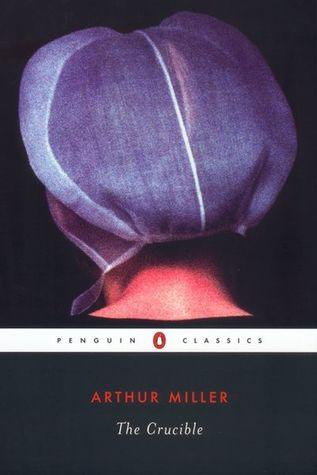
The Crucible by Arthur Miller is a dramatic portrayal of the Salem witch trials, exploring the consequences of mass hysteria and the dangers of extremism. The book's main message highlights the perils of unchecked authority and the importance of personal integrity in the face of societal pressure. Key concepts include the impact of fear on human behavior, the conflict between individual conscience and communal expectations, and the destructive power of false accusations, which ultimately lead to tragic outcomes for the characters involved.
About Book Author - Arthur Miller
It's a genuine pleasure to introduce someone whose work has profoundly shaped our understanding of societal pressures. Arthur Miller didn't start out as the celebrated playwright we know, the mind behind searing dramas like Death of a Salesman. What's interesting about Arthur, and something I've always admired, is his deep connection to the tangible. Many don't realize he's a skilled carpenter, someone who appreciates the integrity of building something solid with his own hands.
This perspective, I believe, informed his approach when he witnessed the chilling atmosphere of the McCarthy era. His own experiences, the sense of pervasive suspicion, directly fueled his exploration of a similar historical moment, leading to the powerful allegorical tale of The Crucible. Arthur possesses an uncanny ability to dissect the human condition under duress, to explore the moral choices people make when confronted by mass hysteria. It's this firsthand insight into the mechanics of fear and accusation that makes his voice on this subject so compelling and necessary.
More Books To Find
The Crucible - Book Overview
The Crucible is really about the hysteria of mob mentality and how fear can drive people to make terrible choices. Set during the Salem witch trials, it explores how a small community can spiral into chaos when paranoia takes over, leading to the persecution of innocent people.
Arthur Miller wrote it not just to highlight the dangers of mass hysteria, but also as a critique of McCarthyism, where people were similarly accused and blacklisted without evidence. He wanted to show how easily truth can be manipulated and how personal vendettas can destroy lives.
What sets it apart from other works on similar themes is its emotional depth and character complexity. Instead of just focusing on the events, Miller dives into the motivations and moral dilemmas of the characters, making their struggles feel incredibly real and relatable.
One story that really stuck with me is the character of John Proctor, who grapples with his guilt and the consequences of his actions. His journey from a flawed man seeking redemption to someone who stands up for the truth, even at the cost of his life, is haunting. It’s a powerful reminder of the importance of integrity and the personal cost of standing against injustice.
Key Insights of The Crucible
The Crucible by Arthur Miller offers profound insights into human behavior and societal dynamics.
1. Hysteria and Fear: The play illustrates how fear can lead to mass hysteria, showcasing the dangers of mob mentality. The witch trials serve as a metaphor for the irrationality that can arise in times of crisis.
2. Reputation and Integrity: Characters like John Proctor struggle with their reputation, highlighting the importance of personal integrity. Proctor’s ultimate choice to stand for truth, even at the cost of his life, emphasizes the value of maintaining one's principles.
3. Power and Manipulation: The play reveals how those in power can manipulate the truth for personal gain. Abigail Williams embodies this, using the trials to pursue her desires, demonstrating the corruption that can arise from unchecked ambition.
4. Individual vs. Society: The tension between individual beliefs and societal expectations is a central theme. Proctor’s fight against the court reflects the struggle of the individual to uphold personal morals in the face of overwhelming societal pressure.
5. Consequences of Silence: The characters' silence and inaction often lead to tragic outcomes. Miller suggests that failing to speak out against injustice can have dire consequences, urging the audience to recognize the importance of advocacy and standing up for what is right.
Who Should Read This Book
"The Crucible" by Arthur Miller is essential reading for anyone interested in the interplay of morality, power, and social dynamics. It appeals to students of literature, history, and drama, as it explores themes of hysteria and integrity during the Salem witch trials. Educators and activists will find its commentary on fear and conformity relevant to contemporary societal issues. Additionally, those intrigued by human psychology will appreciate the characters' struggles with guilt, reputation, and truth. Ultimately, the book resonates with anyone seeking to understand the complexities of human behavior in times of crisis.
Read If You Are
- Interested in themes of morality and ethics in society
- Seeking insight into the consequences of mass hysteria and fear
- A fan of classic American literature and historical drama
Skip If You Are
- not interested in historical dramas or themes of morality and justice
- prefer light-hearted or comedic literature
- dislike complex character dynamics and social commentary
Important Takeaways from this Book
-
Identify and confront your fears: Write down one fear that holds you back. Acknowledge it and create a plan to face it head-on. This matters because overcoming fear can lead to personal growth and increased confidence. Consider sharing your fear with a trusted friend for accountability.
-
Practice honesty in your relationships: Start by being transparent in your next conversation. Share your true feelings or opinions, even if they’re uncomfortable. This builds trust and strengthens connections. Remember, honesty requires vulnerability, so prepare for potential discomfort.
-
Stand up for what you believe in: Choose one issue you’re passionate about and take a stand, whether it’s speaking out, writing a letter, or joining a local group. This empowers you and encourages others to do the same. Ensure you’re well-informed about the topic to articulate your position effectively.
-
Reflect on your values: Set aside 10 minutes today to write down your core values. This self-awareness helps guide your decisions and actions, ensuring they align with your true self. Consider discussing these values with someone close to you for deeper insight.
-
Cultivate community: Reach out to a neighbor or colleague you don’t know well and invite them for coffee or a chat. Building connections fosters a sense of belonging and support. Be open-minded and ready to listen, as this can lead to meaningful relationships.
Book Review
I picked up "The Crucible" by Arthur Miller with high expectations, having heard so much about its powerful themes and historical context. What I got was a gripping exploration of mass hysteria and moral complexity that left me both engaged and reflective.
One of the standout strengths of the play is Miller's writing style. The dialogue is sharp and impactful, making the characters feel real and relatable, even in their most extreme moments. For example, John Proctor's internal struggle between guilt and redemption is beautifully portrayed, making his journey compelling and heartbreaking. The pacing is tight; the tension builds steadily, especially in the courtroom scenes, keeping me on the edge of my seat.
However, I felt some areas could have been stronger. At times, the character development felt rushed, particularly with secondary characters like Mary Warren. I would have loved to see more depth to her motivations, which might have enhanced the overall emotional weight of the story.
In comparison to other classics like "A Raisin in the Sun" or "Death of a Salesman," I found "The Crucible" to be less character-driven and more focused on social commentary. While both are powerful, Miller’s work leans heavily into the allegorical, which may not resonate with everyone.
Overall, I think "The Crucible" is a must-read for anyone interested in themes of justice, morality, and the consequences of fear. However, if you prefer character-driven narratives or lighter reads, this might not be for you. It's a thought-provoking piece that lingers long after the final act.
Final Thoughts
If I'm being honest, finishing The Crucible left me with a mix of emotions. The play's exploration of mass hysteria and the consequences of unchecked power really struck a chord with me. It’s a powerful reminder of how fear can distort reality and lead to devastating outcomes. I’d definitely recommend this if you’re into historical dramas or enjoy literature that makes you think critically about society and morality. However, skip this one if you’re looking for light reading or a straightforward narrative—it's heavy and packed with complex themes.
The thing that surprised me most was the depth of the characters; they felt so real and flawed, which made the stakes feel incredibly high. I can see myself reflecting on the moral dilemmas faced by the characters months from now. While I appreciate the summary for its quick insights, I’d recommend reading the full book to truly grasp the nuances and emotions conveyed in Miller’s writing.
Personally, I found the reading experience to be both challenging and rewarding. It made me think deeply about the human condition and the consequences of fear-driven actions. Overall, I’m glad I took the time to dive into it.
Frequently Asked Questions
How long does it take to read The Crucible?
It typically takes about 4 to 6 hours to read The Crucible by Arthur Miller, depending on your reading speed. With 143 pages, you might finish it in one sitting or spread it over a couple of days for deeper understanding.
What makes "The Crucible" different from other books in this genre?
The Crucible stands out due to its powerful exploration of mass hysteria, moral conflict, and the consequences of fear-driven behavior. Miller's use of historical allegory to comment on contemporary issues, such as McCarthyism, adds depth, making it a timeless reflection on human nature and societal pressures.
Who is the target audience for The Crucible
The target audience for "The Crucible" includes high school and college students studying literature, history enthusiasts, and individuals interested in themes of morality, social justice, and the consequences of hysteria. Its relevance to contemporary issues also appeals to general readers seeking deeper societal insights.
Are there any criticisms or limitations of The Crucible
Critics often point to the play's historical inaccuracies and its oversimplification of complex events. Some argue that Miller's portrayal of characters lacks depth, while others feel the allegorical connection to McCarthyism overshadows the original Salem witch trials, potentially diluting its impact and authenticity.
What is the main theme of The Crucible by Arthur Miller
The main theme of "The Crucible" is the danger of hysteria and the impact of fear on society. It explores the consequences of mass paranoia, the struggle for integrity, and the conflict between individual morality and social conformity during the Salem witch trials.
Tags:
Arthur Miller, The Crucible, The Crucible Book, The Crucible Book Rating, The Crucible Book Review, The Crucible Book Summary, The Crucible By Arthur Miller, The Crucible Description, The Crucible Short Summary

Michel Fisher
Michel Fisher is a passionate fiction enthusiast and book blogger who writes about emotional reads, character-driven stories, and contemporary romance authors that captivate hearts and minds.

The Crucible
Book Overview
Description
"I believe that the reader will discover here the essential nature of one of the strangest and most awful chapters in human history," Arthur Miller wrote of his classic play about the witch-hunts and trials in seventeenth-century Salem, Massachusetts. Based on historical people and real events, Miller's drama is a searing portrait of a community engulfed by hysteria. In the rigid theocracy of Salem, rumors that women are practicing witchcraft galvanize the town's most basic fears and suspicions; and when a young girl accuses Elizabeth Proctor of being a witch, self-righteous church leaders and townspeople insist that Elizabeth be brought to trial. The ruthlessness of the prosecutors and the eagerness of neighbor to testify against neighbor brilliantly illuminates the destructive power of socially sanctioned violence.Written in 1953, The Crucible is a mirror Miller uses to reflect the anti-communist hysteria inspired by Senator Joseph McCarthy's "witch-hunts" in the United States. Within the text itself, Miller contemplates the parallels, writing, "Political opposition... is given an inhumane overlay, which then justifies the abrogation of all normally applied customs of civilized behavior. A political policy is equated with moral right, and opposition to it with diabolical malevolence."WIth an introduction by Christopher Bigsby.(back cover)
Key Points
Mass hysteria fuels paranoia
Characters
Rev. Parris, Tituba, Abigail Williams, John Proctor, Elizabeth Proctor, Giles Corey, Rebecca Towne Nurse, Mary Warren, Deputy Governor Danforth
Publisher
Penguin Books
First Publish Date
10/28/53
Awards
"New York Drama Critics Circle Award Nominee for Best American Play (1953)"

